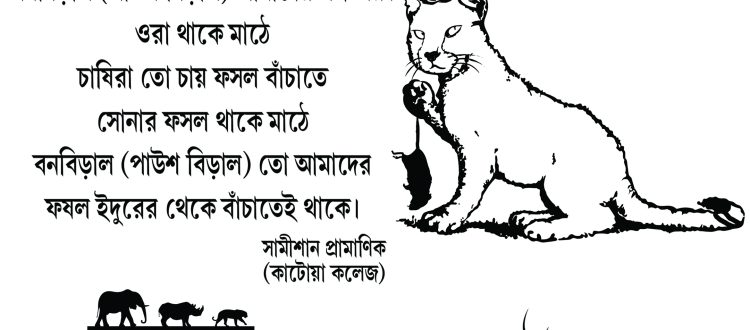A Step Towards Coexistence With Jungle Cats
The local community of Belun, a village in Purba Bardhaman district, West Bengal largely depends on agriculture and poultry farming. With a good portion of their revenue earned from the sale of chicken and duck eggs, a lot of effort is put in to ensure maximum yield. However, like any farming practice, poultry farming comes with its own set of challenges. Such as disease outbreaks and poor biosecurity standards. Additionally, poultry lifting by foxes, jungle cats, snakes and other predators has also been causing conflicting human-wildlife interaction in the region.
Jungle cats are typically found in dense vegetative cover surrounding wetlands. They are small cats with greyish-brown or dark tear stripes running down their cheeks. Also known as swamp cats or reed cats, Jungle cats are fine opportunistic hunters of small mammals, birds and rodents. They are protected under schedule II of the Wildlife Protection Act, 1972.
The villagers of Belun, who rear poultry are majority low-income families with monthly incomes ranging between INR 1000 to INR 12,500. Only a few poultry farmers from high-income backgrounds have been able to afford stronger sheds to keep their poultry safe from jungle cats.
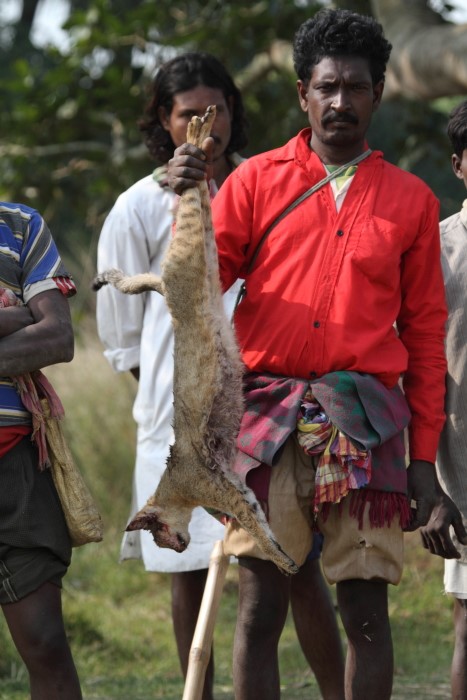
Jungle cat killed by villager; Photo by Tanima Choudhury
Tanima Choudhury through her Ph.D. research on Jungle cats in the Purba Bardhaman district has been observing their diet and behaviour since 2019. Incidences of regular poultry lifting leading to retaliatory killing of the species have been a gruesome sight. Witnessing nearly 12 cats trapped and beaten to death with severe blows to the head has been nothing short of shocking for Tanima. Owing to the severity on the ground she was eager in finding a solution to the problem.
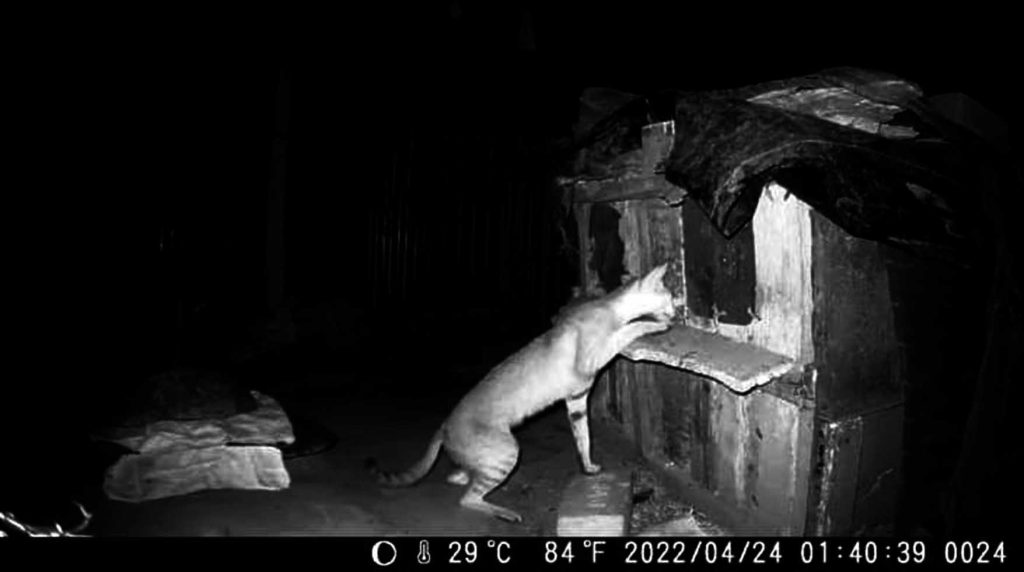
Camera trap visual of a Jungle cat attempting to steal duck from Naru Gopal Hazra’s shed
Households reared poultry in self-made wooden, tin or mud sheds and slightly well-off members resorted to brick sheds. With the help of camera traps, Tanima managed to document the elusive cat using its forelimb to open the ill-fitting doors of the wooden shed with ease and hunt. In the case of netted sheds, they managed to tear open the net or dug around the door of mud sheds. Comparatively, Brick sheds provided better shelter to poultry, but makeshift doors were easily maneuvered by the cat. Since the jungle cat’s mode of operation was now clear, Tanima had a plan of action.
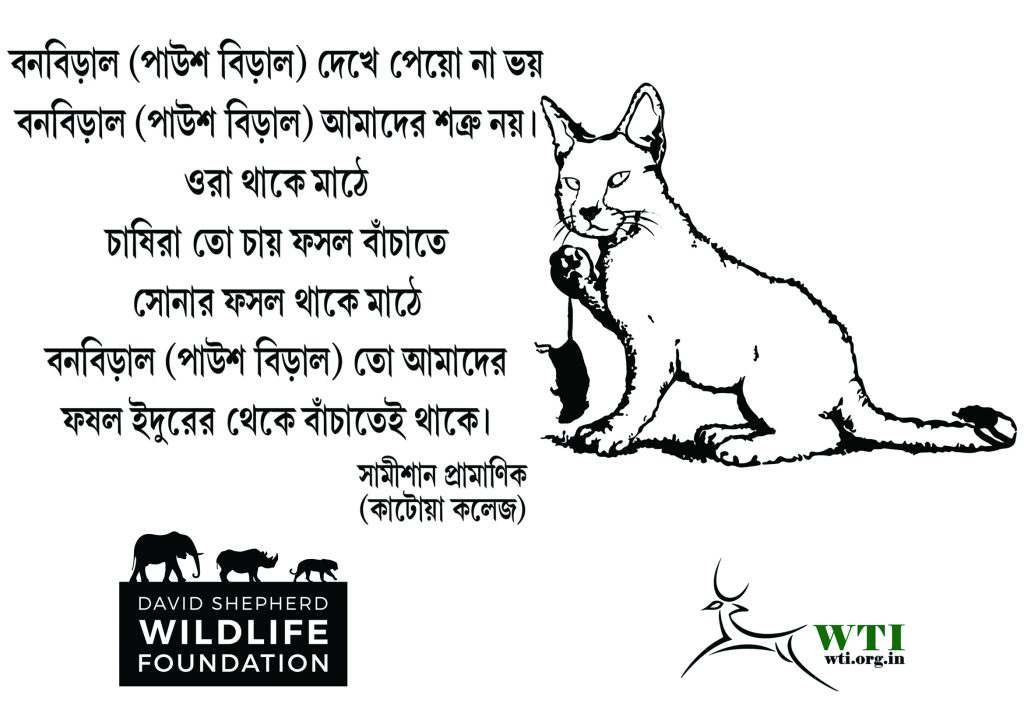
The illustration of a jungle cat with a rodent
In February 2022, as a part of Wildlife Trust of India’s Rapid Action Project (RAP), Tanima identified 12 low-income families who could only afford netted, wooden, or mud sheds. A full-proof shed design was decided upon and Tanima helped construct brick sheds with good latching systems for the doors. To ensure coexistence, she felt the need to highlight the pros of living with these jungle cats. Her Ph.D. study indicated 63% of their diet constituted rodents via scat analysis. Through her engagement with the community, she continues to sensitize villagers on the silent role played by jungle cats in controlling the rodent population, a pesky threat feared by agricultural farmers.
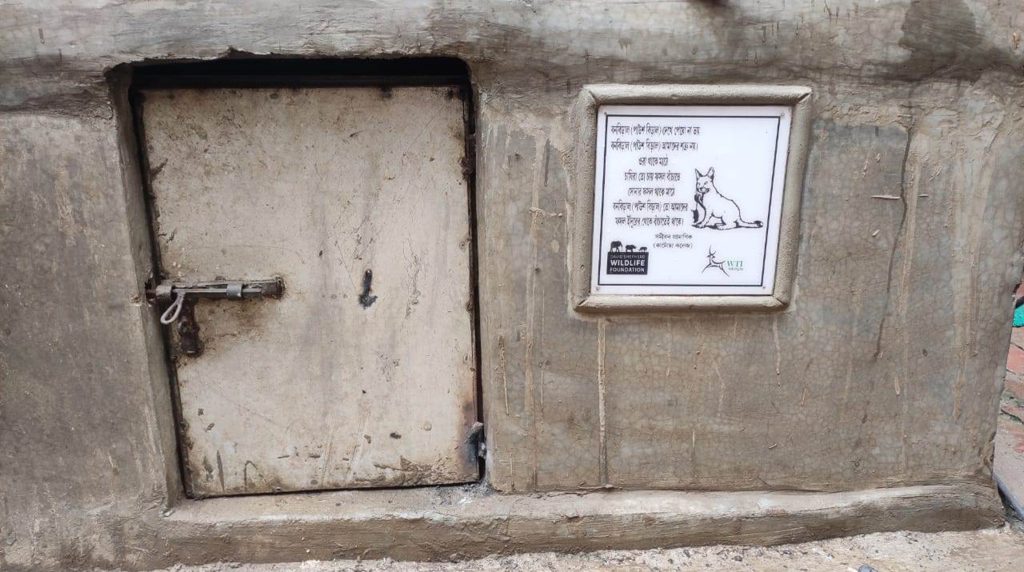
Brick sheds with latching systems; Photo by Tanima Choudhury
The monitoring of the brick sheds constructed has shown zero poultry loss to date. We hope this project is considered a successful working model to safeguard poultry and jungle cats, a win-win scenario for the community and wildlife of Belun village.

